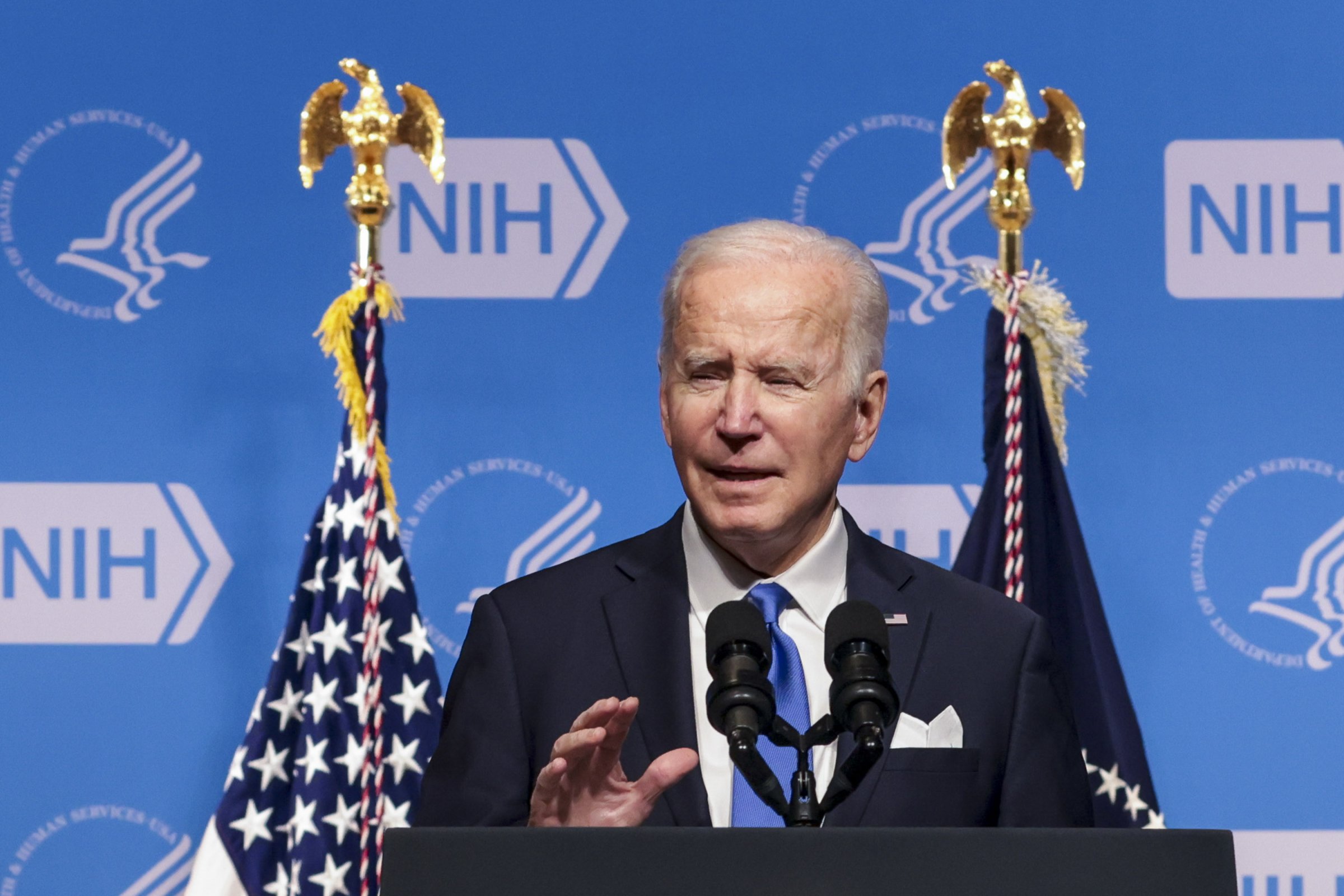
As the Biden Administration prepares to tackle the ongoing COVID-19 pandemic this winter, part of its strategy is to expand access to rapid, at-home coronavirus testing free of charge—something that many public health experts have said is key to controlling spread of the virus.
“The bottom line: This winter, you’ll be able to test for free in the comfort of your home and have some peace of mind,” President Joe Biden said during a speech Thursday outlining a new set of actions aimed at fighting COVID-19.
Public health experts say the idea is simple but crucial: if at-home rapid tests are both widely available and inexpensive, people can get close to real-time information about whether they are infectious. They could take a test before going to a holiday party, for example, or before attending a work event.
“Individuals, families, parents of schoolchildren, employees, diners—virtually everyone—can markedly increase physical safety and mental well-being by having access to rapid tests. It is a pandemic game-changer,” Dr. Michael Mina, an epidemiologist who has been vocal about the need for rapid testing, and Dr. Steven Phillips, vice president of science and strategy for the COVID Collaborative, wrote in TIME in September. They called for an “Operation Warp Speed”-style program for rapid, at-home testing.
The Administration’s plan relies on the private insurance industry, which will be required by law beginning early next year to cover the cost of rapid, over-the-counter tests. How exactly that works remains to be seen. Rules still have to be developed around how insurers communicate this change to customers, how many tests will be covered and the frequency at which people can get covered tests. Anyone who has had to interact with their insurance company to access medical care knows there are potential hurdles that could slow down the process.
“It’s certainly a step in the right direction,” says Lindsey Dawson, an associate director at the Kaiser Family Foundation who has been studying the availability of rapid COVID-19 tests. As it is, anyone who wants a take-home test must buy it on their own, typically paying out of pocket with no expectation of private insurance reimbursement. But Dawson adds the new rule “isn’t going to eliminate the cost barriers that we’ve seen.”
Save those receipts
Biden has told the Departments of Health and Human Services, Labor and Treasury to issue guidance by Jan. 15 that will require private insurers to reimburse people for the tests. That guidance will offer more details on how exactly the reimbursement will work. As with PCR tests that Americans have been using throughout the pandemic, health plans won’t be required to cover at-home testing mandated by employers.
The White House has suggested that under the new rules, individuals may be required to submit their receipts for reimbursement. If that’s the case, Americans will still have to front money for the tests—which could add up quickly for many families, especially if people want to frequently take at-home tests.
“It does require the individual to jump through some hoops. So they have to hold on to their receipts for the tests. They have to turn those in and follow whatever reimbursement process is required by the insurer. And they have to be able to afford to front the money. They have to be able to afford to wait for the reimbursement,” Dawson says. And all of that is only possible if people actually know they can be getting reimbursed for the tests.
The cost of the tests currently range in price: in the U.S., a two-pack sometimes costs $14, while another company charges more than $30 for one test. Others are far more expensive.
The new policy also won’t apply to people covered by Medicare or Medicaid, the public health insurance programs for older and low-income Americans, who are often particularly vulnerable to COVID-19. To address that population, the Administration is doubling the 25 million rapid tests it sent in September to places such as community health centers to reach 50 million at those sites.
“These 25 million tests that will be distributed to community sites are really aimed at reaching people who are uninsured and underserved, but whether or not that’s enough to meet demand is yet to be seen,” Dawson says.
Better late than never
Many public health experts have said the U.S. should have made rapid, at-home tests free and widely available months ago. In other countries like Germany and India, individuals can pick up tests for a few dollars a pop, while places like the U.K. and Singapore have sent free tests directly to residents’ homes. Availability has fluctuated in the U.S. The Biden Administration has spent $3 billion increasing the supply of rapid tests. If all Americans over 11 years old were tested twice a week as the U.K. recommends for its population, we would need 2.3 billion tests per month, Dawson estimates.
When White House Press Secretary Jen Psaki was asked about the plan to have private insurers reimburse Americans for at-home COVID tests, she said the Administration’s medical team “looked at a range of options” before deciding on this path.
“We want to make testing more available and more accessible to people across the country,” she said at a press briefing on Thursday. “So, this is a step that was—our team agreed was implementable and possible to do now, and we will continue to build on it.”
More Must-Reads From TIME
- The 100 Most Influential People of 2024
- The Revolution of Yulia Navalnaya
- 6 Compliments That Land Every Time
- Stop Looking for Your Forever Home
- If You're Dating Right Now , You're Brave: Column
- The AI That Could Heal a Divided Internet
- Fallout Is a Brilliant Model for the Future of Video Game Adaptations
- Want Weekly Recs on What to Watch, Read, and More? Sign Up for Worth Your Time
Write to Abigail Abrams at abigail.abrams@time.com